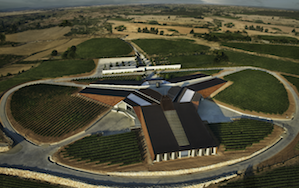But artisanal, terroir-driven wines make up a tiny percentage of the output of Rioja’s 800 wineries and 17,000 growers. Crianza is still the biggest category (at 104m litres it represents 40% of sales), but Reserva and Gran Reserva show the biggest increases. Gran Reserva sales jumped by just under 50% in the domestic market.
Premium offering
This is in line with the Consejo Regulador’s stated aim of premiumising the offering. The main goal, the regulatory body says, is “the specialisation in high added-value categories and turning barrel-aged wines into [the] spearhead. The Rioja Reserva and Gran Reserva categories provide a differential personality and strong reputation.”
But while Rioja outperforms the wider market in terms of price levels – the average bottle price is £6.10 in the UK, compared to £5.48 across the wine market as a whole – it still suffers from an inferiority complex, especially in the UK.
“The UK is open to premium wines but it’s difficult for Spanish fine wines,” Roda export manager Victor Charcán says. “Rioja has a reputation for value, and that means promotions and discounts. The challenge is to take the consumer of high-end wines over to Rioja.”
Across the Atlantic, the story is similar. Sales of Rioja in the US fell by 1.85% in 2014, but retailers are still bullish about the region’s prospects – as long as Rioja continues to mean value.
At Calvert Woodley in Washington DC, president Michael Sands says: “Spain in general is one of the biggest category jumps for us. The quality is very high for the price, it’s approachable on release, and it’s affordable.” Others, such as Peter Yi of PJ Wines in New York, note that Reserva at $13-$15 is the “sweet spot”, and the trend is for the traditional style. “The expensive ‘super-Riojas’ are trending down.”
Meanwhile, at home, Rioja continues to dominate: 62% of the region’s output is sold in Spain. The statistics as published by the Consejo Regulador are dramatic. Eight of 10 bottles in the Spanish on trade are from Rioja, either Crianza, Reserva or Gran Reserva. Unsurprisingly, sales are concentrated in north-central Spain, but 15% of sales go to the south.
However rosy the picture, producers are not complacent. Albert Martinez may reckon its only competitors are its DO neighbours, but that is “huge competition”. For Muriel, a powerful brand is the key. “The Muriel name must be stronger than the region. This is not to deny the importance of Rioja. Rioja is established. Now we have to build our brand.”




